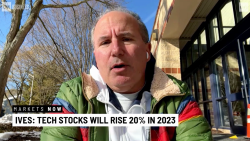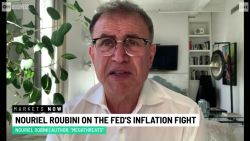Editor’s Note: Mike Calhoun is the president of the Center for Responsible Lending. Jim Parrott is non-resident fellow at the Urban Institute and co-owner of Parrott Ryan Advisors, which provides strategic advice on housing finance issues. Some of his clients are companies that make and service mortgages. Mark Zandi is chief economist for Moody’s Analytics. The opinions expressed in this commentary are their own.

Congress recently did the right thing by giving Americans suffering under the economic impact of the coronavirus a big break on their mortgage payments. If you’ve lost your job or seen a drop in your income because of the virus, and your mortgage is backed by the government, you can get up to six months of forbearance on your mortgage. If at the end of that period you are still under financial stress, you can get six more.
It’s an unprecedented measure in keeping with the unprecedented nature of the economic crisis ahead.
But it also means that millions of borrowers are not going to send in their mortgage payments this month. Unfortunately for the mortgage servicers who collect these payments, they are still on the hook to the investors who provided the cash that was lent to mortgage borrowers. There is, after all, no free lunch. Congress hasn’t made the repayment obligation disappear, but simply moved it from the borrower to the mortgage servicer. As these mortgages are guaranteed by the government, the mortgage servicers will eventually be paid back by the government. But that can take upwards of a year. In the meantime, the servicers must come up with billions of dollars a month to foot the bill for their borrowers.
To give one a sense of the amount of money we’re talking about, if just one in four families with a mortgage takes Congress up on their offer of mortgage forbearance for six months, mortgage servicers will have to cover payments of more than $70 billion. If they take them up on it for the full year, servicers will have to cover over $140 billion, according to Moody’s Analytics analysis. To put those numbers in perspective, last year, servicers had total net profits of less than $10 billion.
The arithmetic doesn’t work. Only the very largest, best capitalized servicers would be able to handle that kind of strain. The rest would falter, and many would fail altogether.
The fate of these companies matters to the rest of us because they are the ones that pick up the phone to help borrowers struggling to pay their mortgage. Widespread failure by mortgage servicers would throw this system into complete chaos. Many struggling homeowners would be left with nowhere to turn, as regulators scramble to find someone else to take on the servicing of their loan. All of this would happen while servicers nationwide are struggling to handle the customers they already have.
Compounding the problem, mortgage servicers also make mortgages. So their widespread failure would mean that many families will have a much harder time getting a loan to buy a home or refinance their mortgage, casting a heavy cloud over our economic recovery once the virus passes.
So policymakers have a choice. They can step in now and address the massive cash-flow problem faced by mortgage servicers, either by advancing these payments directly to investors or by lending servicers the money to do it themselves. Either way, the cost would pale in comparison to bailing out the housing market should the stress on this sector be as bad as many fear. Or they can wait and see how things play out, crossing their fingers that the coming wave of forbearance doesn’t do that much damage — that it only knocks over the first few dominoes.
If the choice sounds familiar, it should. It is not unlike the choice that policymakers faced when first learning of the virus a few months ago: heed to the warnings of experts and move aggressively to stave off a crisis, or take their chances and hope that things won’t be as bad as feared.
Surely, we won’t make that same mistake again.






















